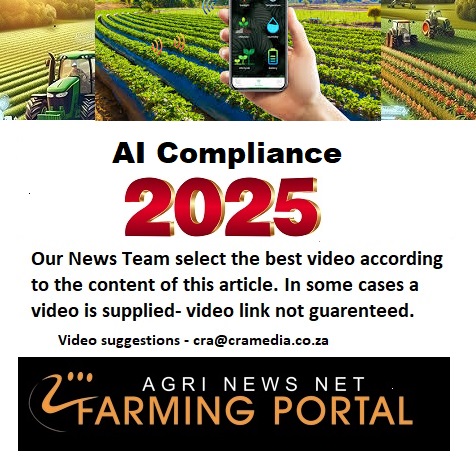By 2030, pig farming stands at a crossroads, shaped by rising input costs, the intensifying impacts of climate change, evolving profitability challenges, and shifting consumer demands for pork meat. As the world’s most consumed meat, pork continues to play a vital role in global food security, but the industry must adapt to remain sustainable and competitive. This article explores the state of pig farming in 2030, delving into the key factors driving its transformation and how farmers, marketers, and consumers—or "users"—are responding.
In 2030, input costs remain one of the most significant hurdles for pig farmers. Feed, which accounts for roughly 60-70% of production expenses, has seen price volatility due to climate-driven disruptions in grain and soybean harvests. Droughts, floods, and heatwaves have reduced yields in key agricultural regions, pushing up the cost of traditional feedstocks like corn and soy. However, innovation has offered some relief. Farmers increasingly turn to alternative feed sources—such as insect meal, algae, and food industry by-products—which not only lower costs but also reduce reliance on deforestation-linked soy imports. Precision feeding technologies, powered by AI and real-time data, optimize nutrient delivery to pigs, minimizing waste and cutting expenses further. Energy costs, too, have shifted, with many farms adopting renewable sources like solar or biogas from manure digesters to offset rising electricity prices. While these adaptations require upfront investment, they promise long-term savings, reshaping the economics of pig farming.
Climate change looms large over pig farming in 2030, with hotter summers and unpredictable weather patterns testing the resilience of both animals and infrastructure. Heat stress reduces pig fertility and growth rates, particularly in regions without advanced cooling systems. Yet, farmers are fighting back. Barns equipped with climate-controlled environments—think automated ventilation and water misters—help maintain productivity, though they add to operational costs. On the flip side, the push for sustainability has spurred breakthroughs. By 2030, anaerobic digesters are commonplace, converting manure into renewable energy and slashing methane emissions—a win for both the planet and farm budgets. Genetic selection has also advanced, producing pig breeds that thrive in warmer climates with better feed efficiency, reducing the environmental footprint per kilogram of pork. The industry’s carbon footprint, once estimated at 668 million tonnes of CO2-equivalent annually, is on a downward trajectory, with some European farms cutting emissions by over 20% through deforestation-free feed and improved manure management.
Profitability in 2030 hinges on efficiency and market agility. While input costs have risen, so has the global demand for pork, driven by population growth and rising incomes in Asia, Africa, and Latin America. However, margins remain tight. Industrial-scale farms leverage economies of scale and technology to stay profitable, while smaller operations struggle unless they tap into niche markets. Premium pork—organic, free-range, or heritage breeds—commands higher prices, appealing to affluent consumers willing to pay for ethical and sustainable practices. Government subsidies and carbon credit schemes in some regions reward low-emission farming, boosting income for early adopters. Still, volatility in feed prices and trade disruptions—exacerbated by climate shocks—keep profitability unpredictable. Successful farmers in 2030 are those who diversify revenue streams, perhaps by selling biogas or partnering with local food chains to reduce transport costs.
Marketing pork in 2030 is all about transparency and values. Consumers, or "users," demand more than just a tasty cut—they want to know how it was raised, its environmental impact, and its welfare standards. Labels boasting "climate-friendly" or "high-welfare" credentials dominate supermarket shelves, though studies suggest animal welfare resonates more deeply than climate claims. Blockchain technology tracks pork from farm to fork, assuring buyers of its origins and quality. In response, producers invest in storytelling—farmers share videos of happy pigs in spacious barns or highlight their use of renewable energy. Niche markets for premium pork thrive, with certifications like "Certified Humane" or "Carbon Neutral" adding value. Meanwhile, mass-market pork competes on affordability, targeting budget-conscious users in emerging economies where pork remains a dietary staple.
By 2030, pork retains its title as the world’s most popular meat, but consumption patterns have evolved. In high-income countries, per capita intake dips as flexitarians and vegans grow in number, driven by climate and health concerns. Yet globally, demand surges, with Asia—particularly China—leading the charge after recovering from African Swine Fever’s devastation in the late 2010s. Pork’s versatility keeps it relevant: bacon and sausages for convenience, loins and chops for premium dining. Users span a wide spectrum—from urban millennials seeking sustainable options to rural families relying on pork as an affordable protein. Health-conscious consumers favor leaner cuts, while advances in breeding ensure pork meets these preferences without sacrificing flavor. Plant-based meat alternatives have gained ground, but pork holds strong, especially where cultural traditions prioritize animal protein.
Pig farming in 2030 is a high-stakes game of adaptation. Rising input costs and climate change test the industry’s resilience, yet profitability remains achievable through innovation and efficiency. Marketing value hinges on meeting user expectations for sustainability and welfare, while pork itself evolves to suit diverse tastes and needs. For farmers, the future demands flexibility—balancing cost-cutting technologies with premium offerings, all while navigating a warming world. The pig industry isn’t just surviving—it’s redefining itself for a new era.

DISCLAIMER
The views and opinions expressed in this program are those of the writers and do not necessarily reflect the views or positions of any entities they represent. The information contained in this website is for general information purposes only. The information is provided by CRA and while we endeavour to keep the information up to date and correct, we make no representations or warranties of any kind, express or implied, about the completeness, accuracy, reliability, suitability or availability with respect to the website or the information, products, services, or related graphics contained on the website for any purpose. Any reliance you place on such information is therefore strictly at your own risk.


















